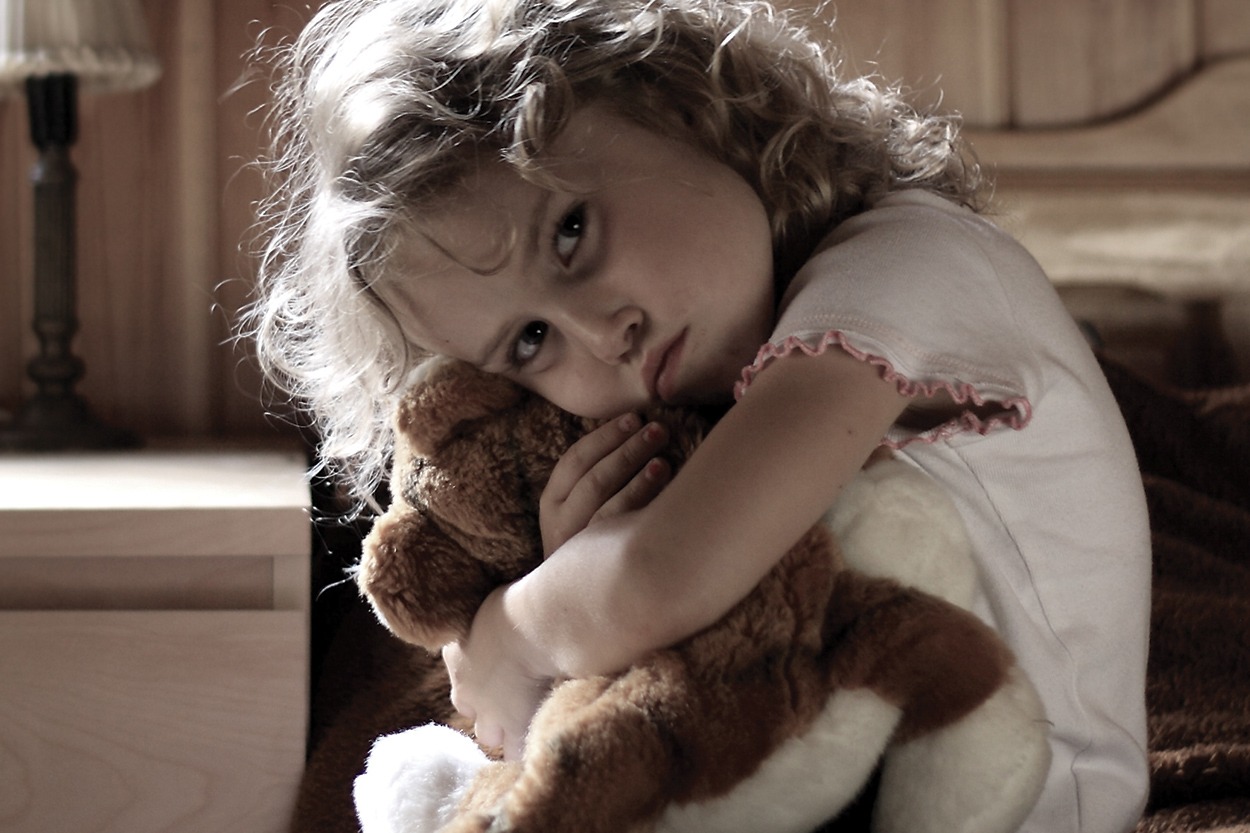10 signs that your child has suffered trauma

With trauma in children, there are no hard and fast rules for how traumatizing an event will be. There is no system to gauge the severity, such as a DEFCON 4 or code orange traumatic event. Two people can go through the same event and one will develop PTSD symptoms and the other will not. The key is the perception, emotions and physical sensations of the person going through it. This is where children get the short end of the stick. People believe that the event was not “bad enough” to create PTSD symptoms in a child. If the child has little to no language, he is unable to express his distress. The event can be a sibling picking on him, being bullied at school, riding in an ambulance, going to the hospital or anything in-between that causes the child anguish.
1. Changes in bathroom routine
If your child has been potty trained for months and suddenly start to have accidents again, we need to question the change. Most children do not regress unless something has either changed in their lives (new sibling, divorce, etc.) or they have experienced emotional discomfort.
2. Quick change in emotion
This one is hard because quick changing emotion is the definition of a child. What we are looking for is a change that is different than in the past. This is where the caregiver’s power of observation comes into play. A therapist or medical provider won’t be able to detect this one on their own. You need to voice your concerns.
3. Changes in vocalization/selective mutism
Negative changes in verbalization are a huge red flag and are a form of developmental regression. Medical providers need to know about this right away so they can do various testing to make sure it is not a medical issue. If nothing seems to be wrong in that avenue, a mental health therapist should be seen.
4. Questions about death, being alone, being hurt, hopelessness and pain
These questions will come up naturally as children are curious. However, if these questions are the bulk of the questioning, then you need to look at why this is coming up now. The best way to handle this is to answer as honest and open as possible for the age group. Children are great at finding misconnecting information and will only perpetuate the questioning further. If you feel that they are too focused on these subjects and are unable to break away from the issue, it is time to seek assistance.
5. Aggression, irritably and/or anger
These aspects come from the lack of language. When we don’t know how to describe the emotions that are inside, we go to the easiest emotion to express — anger (adults are guilty of this as well). So while pushing people away may be the worst way to get the help we need, it may be the only way we get any help at all.
6. Odd play behaviors
All children will pretend play some brutal themes at times, crashing cars or dinosaurs eating people. But when the themes become reoccurring, overly violent or acting out a concerning event, it is time to explore it further. It is important not to shame or scold your child because playing is how children learn. So inquiring what they are doing and where they might have seen it will become invaluable clues as to their emotional stress level.
7. Memory loss or distortions
Medical providers and personnel need to be informed that your child has memory loss or distortions. They will make sure that physically there is nothing wrong and that it may have a cognitive/emotional root. Memory loss or distortions can arise for multiple reasons, including a highly emotional response to an event, someone has told your child not to tell or your child has specifically blocked the memory.
8. Concentration problems
This may not be obvious right away and it can come in two different forms. Either the child is full of thoughts related to the trauma and can’t return focus to what he should be paying attention to or his brain is bouncing from thought to thought so fast the overstimulation makes processing information difficult. Either way, this can have long-term consequences academically, socially and undermine your child’s self worth.
9. Increased sexual behaviors
The first question I get when parents report that their child is increasing sexual behaviors or masturbation is if their child was sexually abused. This may be the case, and with proper assessment this can be explored. However, the child may be using this bodily function to get endorphins to try to make him feel better. This is not a place for shame or guilt but seen as a coping skill.
10. Physical symptoms
If your child is having tummy aches or headaches every time you are about to go to a specific place, it would be helpful to observe or ask why the child doesn’t want to go there. Medical professionals should always be consulted first to determine if there is a physical reason behind the symptoms. The mind has the ability to create physical problems, so the symptoms may not be a conscious decision on the child’s part, and don’t assume the child is creating it to “just be difficult.”
If your child has any of these signs, it does not mean your child has PTSD, but it is an indication of distress and should be investigated by the caregiver, therapist and/or medical provider. It is important to keep an open mind when discussing these aspects, and it is a wonderful opportunity to grow and gain better coping skills for the future. For more information on PTSD in children, check out the National Center for PTSD, PTSD Alliance and theNational Institute of Mental Health.












